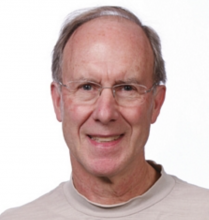EECS Seminar: Using Optical Speckle in Multimode Waveguides for Compressive Sensing

Abstract: Most imaging and radio-frequency (RF) systems digitize their input at the Nyquist rate and compress this data in post processing. For sparse signals and images, this paradigm wastes resources such as size, weight, power and communication channels, and about 10 years ago compressive sensing (CS) was developed to address this issue. In CS, measurements are made of the inner products of the input signal and rows of a specially designed measurement matrix (MM) such that the number of measurements made is on the order of the sparsity. For properly chosen MMs, the sparse image or signal is then recovered from the inner products by algorithms such as basis pursuit (penalized ell-1 norm) or orthogonal matching pursuit. The keys to a practical CS system lie in generating the MM with low SWaP and accurately calibrating the MM. For RF signals in the GHz band, electronic methods for generating the MM are unattractive because of amplitude noise and timing jitter that cannot be calibrated. In optical realizations, however, the equivalent noise and jitter in the MM are largely static and the MM can be calibrated. This presentation will provide review of the strategies for performing CS in the photonic domain and present our recent results using optical speckle for CS.
Biography: George C. Valley got his AB at Dartmouth College and his doctorate at the University of Chicago, both in physics. His doctoral thesis was devoted to hydromagnetic wave propagation in a medium characterized by a stochastic magnetic field. After graduation he worked on wave propagation in the ionosphere and laser propagation through atmospheric turbulence at Cornell Aeronautical Laboratories in Buffalo, NY. He then worked for Hughes Aircraft Corporation for 22 years including 18 years at the Hughes Research Laboratories in Malibu, CA. At Hughes, he worked on guide stars for adaptive optics systems, and in this work he used what is now known as the Hufnagel-Valley model of atmospheric turbulence. In 1999, he joined The Aerospace Corporation where he has focused on photonics, analog-to-digital converters and compressive sensing. In 2007 he wrote a definitive review of photonic analog-to-digital converters for Optics Express and later was part of a research group that achieved a record 8.5 effective number of bits (ENOB) over an input bandwidth of 10GHz. More recently, he and collaborators have invented and demonstrated multiple photonic schemes for implementing compressive sensing of GHz-band RF signals. He is a member of the American Physical Society, a fellow of the Optical Society of America and the author/co-author of 120 publications and 20 patents.
Share
Download
Upcoming Events
-
CBE/BME Seminar: Building Laboratories on Motes of Dust to Scale Life Science Research 1000-fold
-
CEE Seminar: Transforming Data into Actionable Decisions: Harnessing Heterogeneous Data and Models for Informed Water Management
-
MSE 298 SEMINAR: Sustainable Circularity in Plastics
-
EECS Seminar: Topological Photonic Nanostructures for Ultimate Control of Classical and Quantum Light
-
CEE Seminar: Building Connections, Leaving Impact, Pioneering Innovation in Water through Vision and AI
